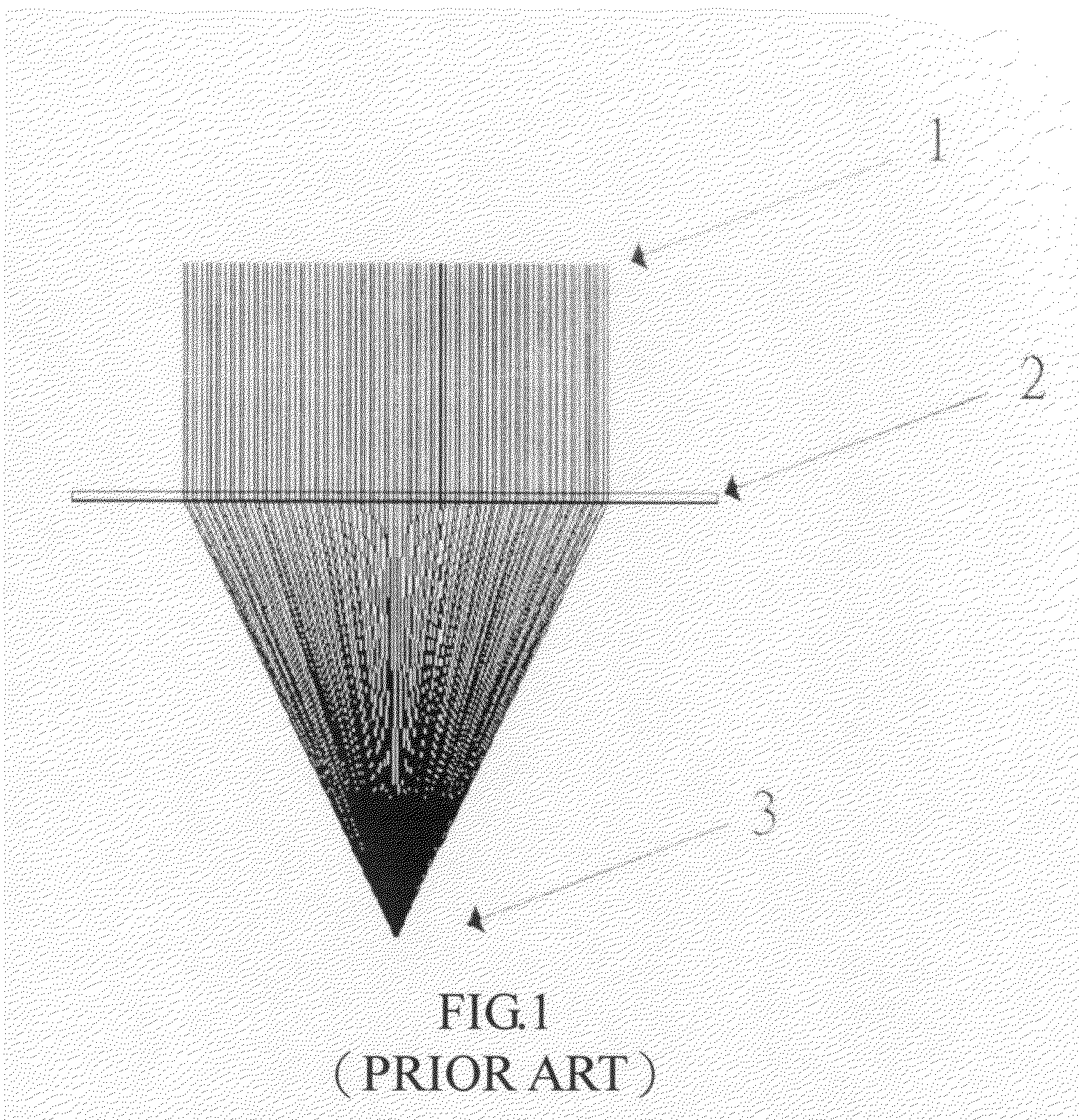Optical structure and solar cell using the same
a solar cell and optical structure technology, applied in the field of optical structure and solar cell using the same, can solve the problems of inability to accurately concentrate light rays of different wavelengths in the same area, and the collection of light rays of different wavelengths, so as to improve the photoelectric conversion efficiency of the solar cell and reduce the operating temperature , the effect of accurately concentrating light rays
- Summary
- Abstract
- Description
- Claims
- Application Information
AI Technical Summary
Benefits of technology
Problems solved by technology
Method used
Image
Examples
Embodiment Construction
[0028]The present invention is characterized by dividing a typical primary lens 2 into several optical operational regions. To define each said optical operational region, divisional benchmarks are determined taking similar light-entering ranges of light wavelengths. Besides, a divisional angle is determined according to a shape of a concentration region, wherein the angle is derived from dividing 360 degrees by N, where N denotes the number of sides of the polygonal concentration region. Furthermore, the area of the intended concentration region is controlled by a distance between the concentration region and the benchmarks. Afterward, a tip of the optical operational region is taken as a center of rotation so as to form an annular array filling the 360-degree area. Hence, N-1 said regions are integrated into a whole optical structure, thereby accomplishing the present invention.
[0029]Please refer to FIG. 3A. Therein, a triangular optical operational region 5 is defined on a typica...
PUM
 Login to View More
Login to View More Abstract
Description
Claims
Application Information
 Login to View More
Login to View More - R&D
- Intellectual Property
- Life Sciences
- Materials
- Tech Scout
- Unparalleled Data Quality
- Higher Quality Content
- 60% Fewer Hallucinations
Browse by: Latest US Patents, China's latest patents, Technical Efficacy Thesaurus, Application Domain, Technology Topic, Popular Technical Reports.
© 2025 PatSnap. All rights reserved.Legal|Privacy policy|Modern Slavery Act Transparency Statement|Sitemap|About US| Contact US: help@patsnap.com



